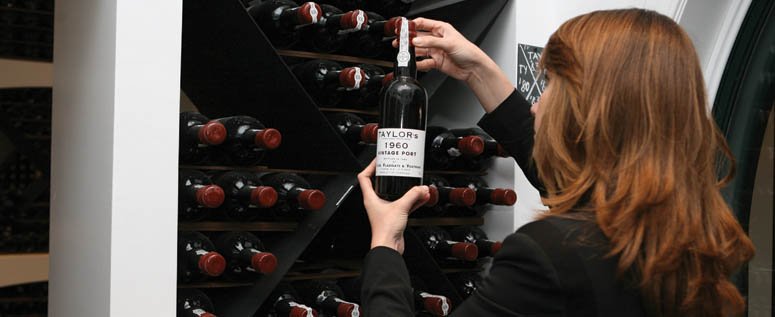The production of Port is an endless story. From the care of the vineyard through the constant modernization of viticultural technology to a successful harvest. Weather conditions throughout the year also play a significant role here.
Harvest
Vintage Grape harvesting in the Douro Valley is more or less the same as in other wine-growing areas. It starts from the end of August and is harvested until the end of October, so it lasts about 2 months. During this period, the vineyards are worked 10 – 12 hours a day. Mechanization cannot be used everywhere and only manual work remains.

The Douro region does not belong to the densely populated areas, which is why workers from other regions also come here for the vintage. These so-called rogas form groups of 10 – 15 people and, under the leadership of a rogador, they have been working for one winemaker year after year for decades.
Women cut the grapes and store them in containers. Men do the harder work – they carry containers filled with grapes to collection points, where they load them on tractors. These are then taken to the winery for further processing. Everything is done with great care so that the grapes are always in good condition. Men – rogas – do mostly harder jobs.


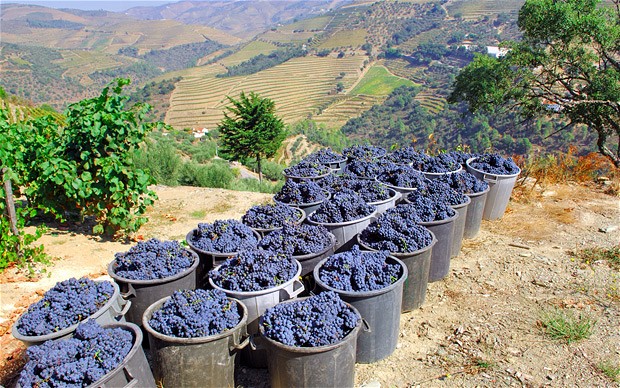
After a hard day’s work, rogas and others are still waiting for the grapes to be trampled in in large stone vat called „lagar“.
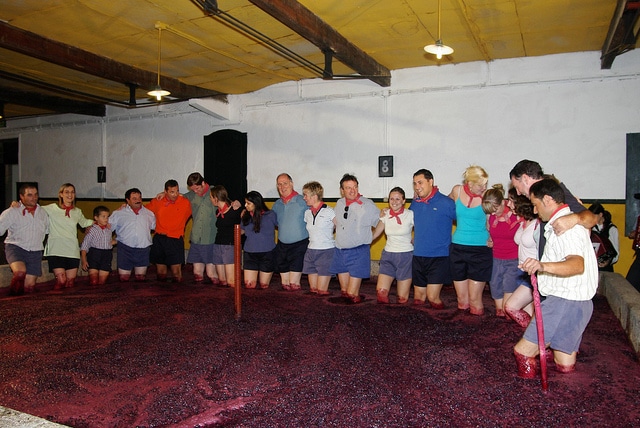
Making of wine juice
As soon as the grapes get out of the vineyard under the roof of the winery, the next stage of production takes place – obtaining must (mash). At present, most winemakers carry out this operation by mechanized grinding and fermentation in stainless steel tanks, but some still retain the traditional methods of pedaling grapes in stone tubs – lagares.
Lagar is a shallow, spacious granite tub where harvested grapes are poured. Men and women then enter this bath and tread the grapes barefoot. This creates a mash that sometimes reaches their knees when pedaling. All this takes place to the sounds of folk music and this production operation becomes an interesting ceremony.
The first phase of pedaling grapes is called Corte. In it, the men and women in the lagara hold each other’s shoulders in a row, and at the same time they slowly move forward and backward in the same rhythm. The aim is to gently separate the must from the skins and shards. This takes about 2 hours and after this operation the berries are crushed, but not the oven.
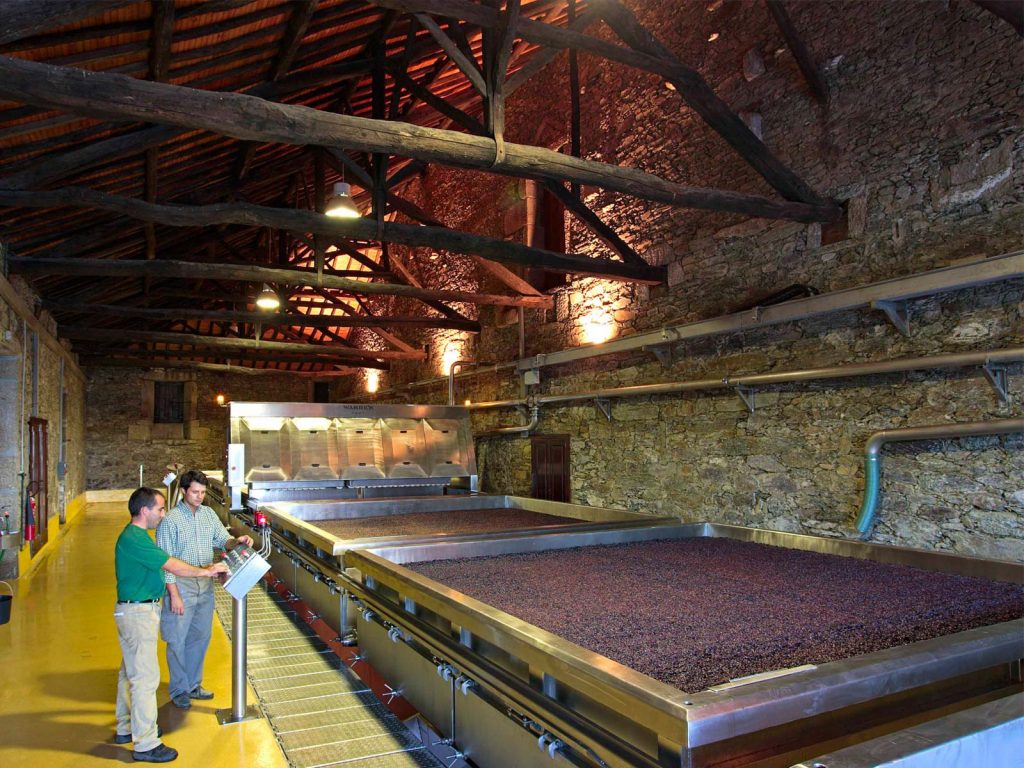
Freedom! Freedom! By summoning the foreman, the second phase begins, during which everyone moves freely along the lagares to the rhythms of the accordion or keys. The aim of this move is the need to immerse the skins below the surface of the must. This achieves a more pronounced color and it is up to the producer what color the wine wants to get.
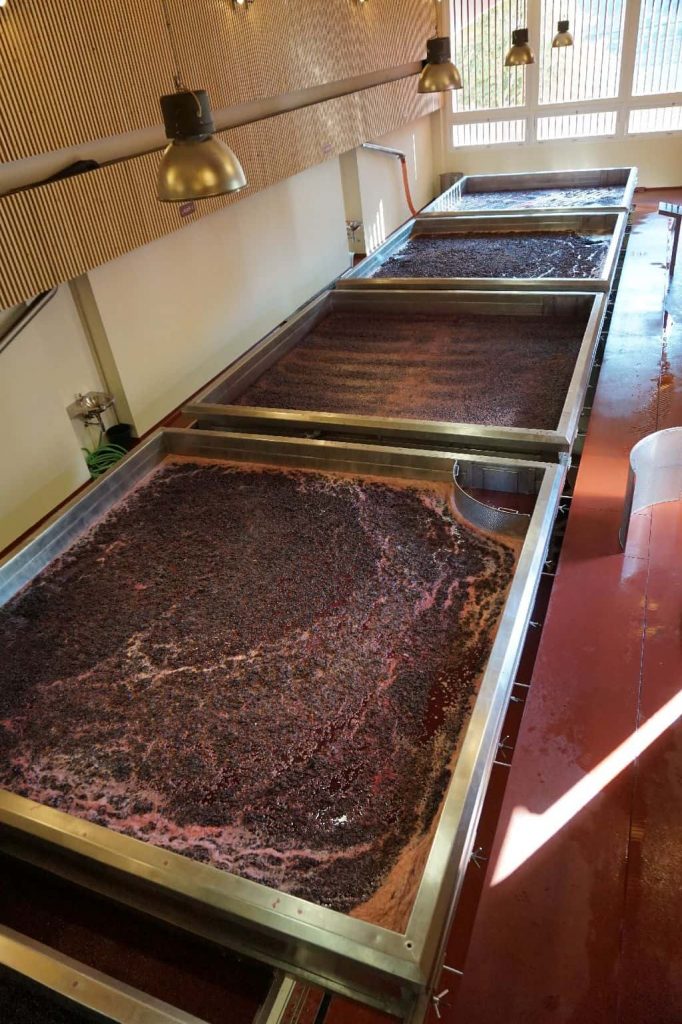
This activity lasts about 3 hours and then the women and men leave the lagares. After a few hours, they return and dip the hat off the surface again. They also use wooden tools called macaco (monkeys) for this work. This method of processing is strenuous and time-consuming and is currently used only for part of the production and for promotional purposes.
Large productions already use computer-controlled systems that faithfully copy the work of human feet.
Fortification of wine juice
Even during the final treading, the winemaker determines the sugar content, density and temperature of the must on the samples taken. This information is used to determine when to start fortification, add wine distillate and end fermentation.
Before the moment of fortification, the must is left motionless for 4 hours, which causes the raspberry hat to come out of the skins to the surface and the liquid part is discharged through an opening in the bottom of the lagares. The remaining mass is processed separately, fortified and stored outside the main tanks.
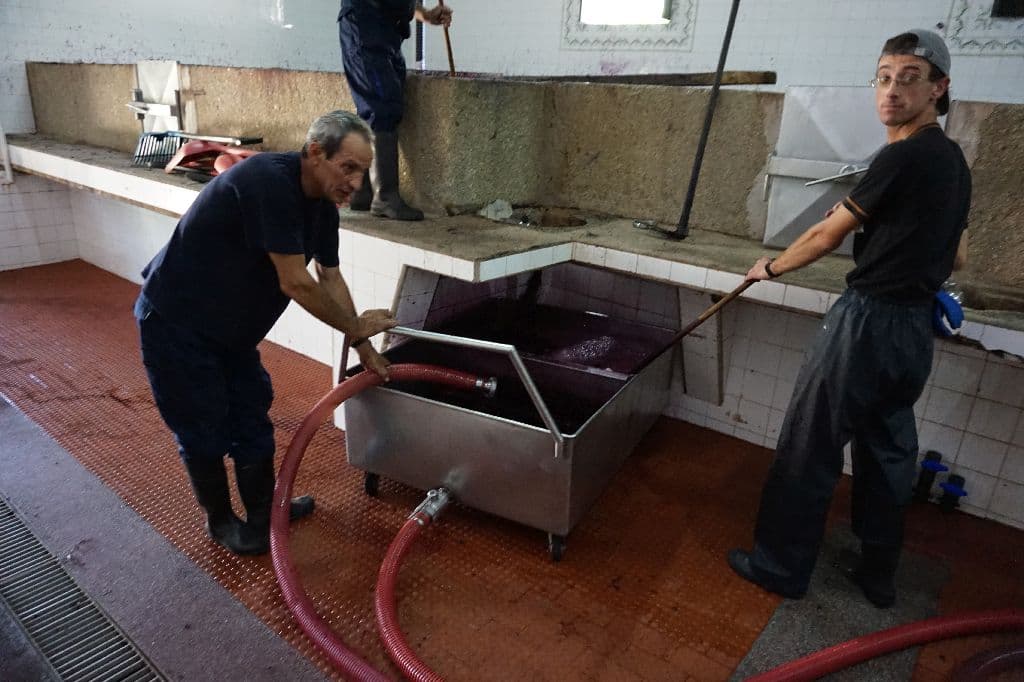
Wine distillate at a concentration of 77 % alcohol is usually added to wine must in a ratio of 115 liters of brandy to 435 liters of must, but this ratio may vary from manufacturer to producer. We call this operation fortification. It is not a condition that the distillate comes from the Doura region, not even from Portugal. However, it must pass the exams at the Institute of Port Wines before it can be used for fortification.
The addition of alcohol to the must completely stops the fermentation, as the wine yeast can no longer survive in this environment. However, residual, unfermented sugar remains here and thanks to it, the resulting product is then naturally sweet.
Port maturation and storage
The vintage is over and the Douro Valley is entering a quieter period. The wine remains in the wineries through the winter until the spring, but instead of hired rogas combers, there are technical experts who adjust and assess other processes that are created in the wine. They monitor the good health of wine, regulate the sulfur and alcohol content. The wine is cleared over the winter and the sludge settles on the bottoms of the tanks.
In the spring, the wines are cleared of sludge and prepared for transport to cellars in Vila Nova de Gaia on the Atlantic coast, where they will be further processed, stored and bottled. Why am I here? This place is a consequence of historical rules, when the port for export could leave the country only from this part of the city of Porto. The location of Vila Nova de Gaia on the south side of Porto is also advantageous for its constant temperature, which is unusual for Port wine.
In earlier times, wine traveled along the Douro River in barrels on ships called barcos rabelos. These ships were able to hold 30 to 70 barrels of wine. However, the journey through fast rapids and narrow gorges was very dangerous, so with the development of transport in the valley, wine began to be transported by road and rail.
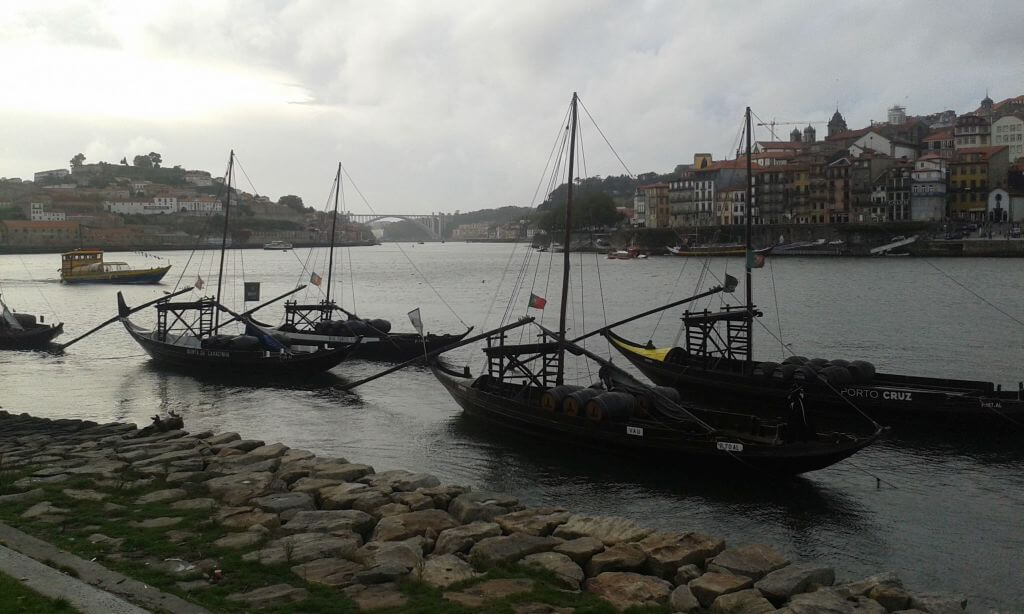
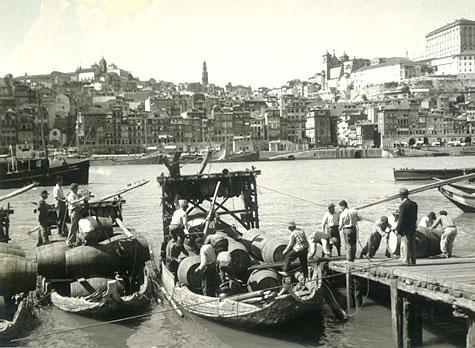

Before the wine is put into storage, its properties and preconditions for further use are evaluated in the laboratory. It can either be left as port ruby or tawny or, in the case of higher quality and exceptional years, be intended for the production of vintage or late bottled vintage (LBV) port wines.
This variety of different types of wines is one of the most fascinating elements of Port. It results from different ways of maturing. Its potential for archiving and fortification means that port will continue to improve in barrels and bottles much longer than most other wines. Port wine barrels
As the port matures, the tannins and intense, young fruity flavors gradually recede into velvety smoothness and soft tones, which become even more pronounced with age. At the same time, the appearance of the wine changes, as its initial dark red color slowly becomes lighter and takes on shades of amber.
Wines that mature in wooden barrels are in contact with the air, thus oxidizing and developing faster than those stored in tanks or tanks. The wine in the bottle has almost no contact with the air. In a small wooden barrel, where the air access is greatest, the wine ages the fastest.
Port wine can thus be divided into two „families“. Port wines aged in wood – small or large barrels usually made of oak or chestnut and port wines aged in bottles most of their time.
